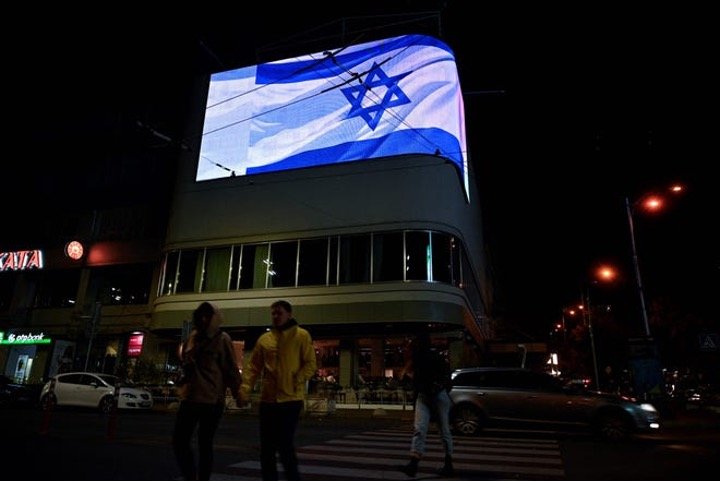Our calendar is beginning to bulge with days that have become so notorious that they are simply known by their dates. “9/11,” of course. “January 6.” And “October 7.” Days that live in infamy because of the awful events that happened on them.
Jewish tradition has long had a few of these as well—commemorations that are just known by their dates on the calendar. The 17th day of Tammuz is a minor fast day that falls this year on Tuesday, July 23. According to the Talmud (Ta’anit 26a-26b), 17 Tammuz is associated with historical tragedies for the Jewish people. Some of these calamities can be seen as “preludes” for disasters that would fall on the 9th Av, exactly three weeks later:
…חֲמִשָּׁה דְּבָרִים אֵירְעוּ אֶת אֲבוֹתֵינוּ בְּשִׁבְעָה עָשָׂר בְּתַמּוּז
,בְּשִׁבְעָה עָשָׂר בְּתַמּוּז נִשְׁתַּבְּרוּ הַלּוּחוֹת
,וּבָטַל הַתָּמִיד
,וְהוּבְקְעָה הָעִיר
,וְשָׂרַף אַפּוֹסְטְמוֹס אֶת הַתּוֹרָה
.וְהֶעֱמִיד צֶלֶם בַּהֵיכל
Five terrible things happened to our ancestors on the 17th of Tammuz…
1. The tablets were shattered (by Moses upon seeing the Golden calf; Ex. 32:19);
2. The Tamid/daily sacrifice in the Temple was cancelled (by the Roman authorities);
3. The city walls of Jerusalem were breached;
4. The Roman general Apostemos publicly burned the Torah;
5. And an idol was placed in the Sanctuary of the Temple.
It's that third item that cuts to the quick this year. It’s not difficult to imagine the carnage of the “breaching of the walls.” After all, we saw it with our own eyes on October 7, nine-and-a-half months ago, when Hamas terrorists tore through the Israeli villages and kibbutzim in the western Negev, murdering and raping their victims, setting fire to the towns, and seizing hostages, 120 of whom are still being held prisoner in Gaza.
Last week, I visited the ruins of Kibbutz Nir Oz. Of the 427 residents of that community, one in four were murdered, wounded, or taken hostage on October 7, 2023, that cursed Simchat Torah. Nine-and-a-half months later, the kibbutz is a ghost town—desolate and frightening. And like a prehistoric insect embalmed in amber, Nir Oz is frozen in time. Broken glass still carpets the ground, the walls remain ashen, children’s toys litter the floor—and the sukkah is still standing.
It was brutal to be there, and I struggle to post this here. But it’s essential that we keep sharing the images and telling the stories of what happened in Nir Oz (and Be’eri, and Kfar Aza, and all the other devastated towns, and at the site of the Nova music festival), so that the world can bear witness.
Images are more powerful than words (at least they’re more powerful than my words), so I’ll share this as a photo-essay of what I saw at Nir Oz last week. The images are devastating, but important. Please note: I’m posting this from a laptop computer, and the photos are neatly arranged on my screen—my apologies if the formatting is messed up on phones or iPads.
The entrance to the main building at Kibbutz Nir Oz today.
Some of the destroyed homes of the kibbutz:
The Hadar Ochel / communal dining hall and kitchen of the kibbutz:
The kindergarten classroom of Nir Oz:
The sukkah is still standing, in shambles, nine months after the festival (“the Season of our Joy”) ended:
And the rage and resentment against this government’s failures - in preventing the attack and in bringing the hostages home - is palpable everywhere:
This sign, posted outside one of the scorched homes, says, “Netanyahu: My family’s blood is on your hands!”, and is signed by the residents.
A few more images from the houses of the kibbutz, include the burnt house of Oded Lifshitz, an octogenarian journalist and lifelong activist for peace between Israelis and Palestinians, now one of the hostages.
The names that are on everyone’s lips in Israel are those of the Bibas family of Nir Oz. Their family of four - parents Shiri (age 32) and Yarden (age 34), and their children Ariel (age 4) and Kfir (age 9 months) - were kidnapped and remain hostage in Gaza today. Shiri’s parents Yossi and Margit Silberman were murdered on Oct. 7. Kfir Bibas has now lived more than half of his life as a hostage to the Hamas terrorists. The scene at the Bibas home is devastating:
The Bibas family mailbox, with four labels that read “hostage.”
THIS is why we’re fighting this just war. THIS is what is at stake when we say “BRING THEM HOME.” It pains me to post these pictures here, but the world must know about what happened here and elsewhere on October 7.
The view through the fence at the border of the Kibbutz, with Gaza just beyond.
The flag flying half-mast at the entrance to the kibbutz.


























































